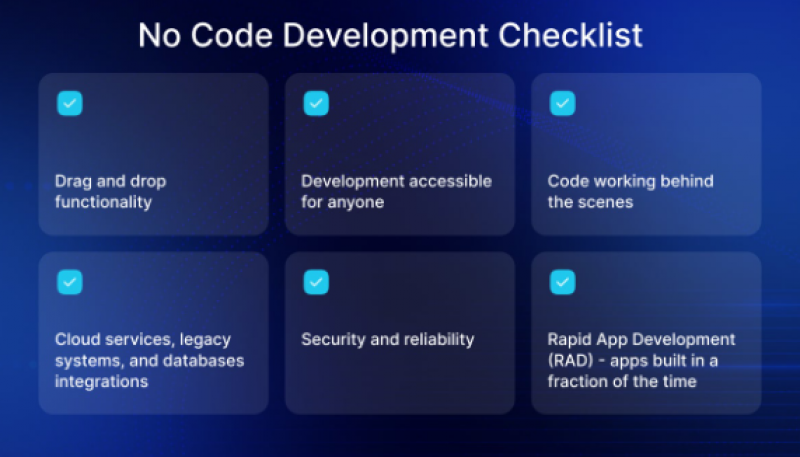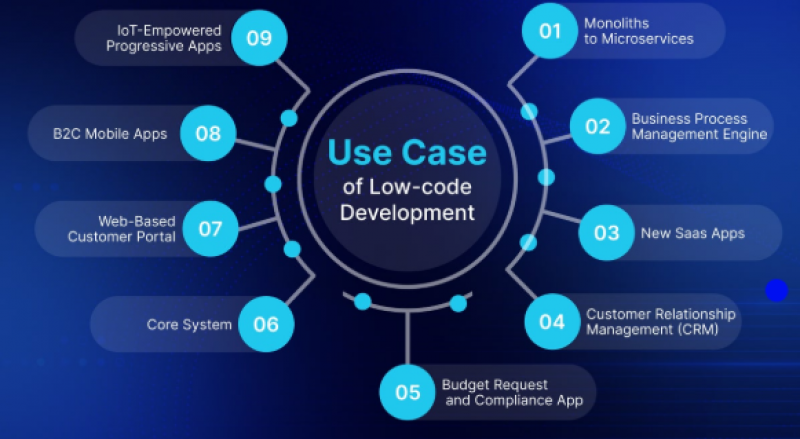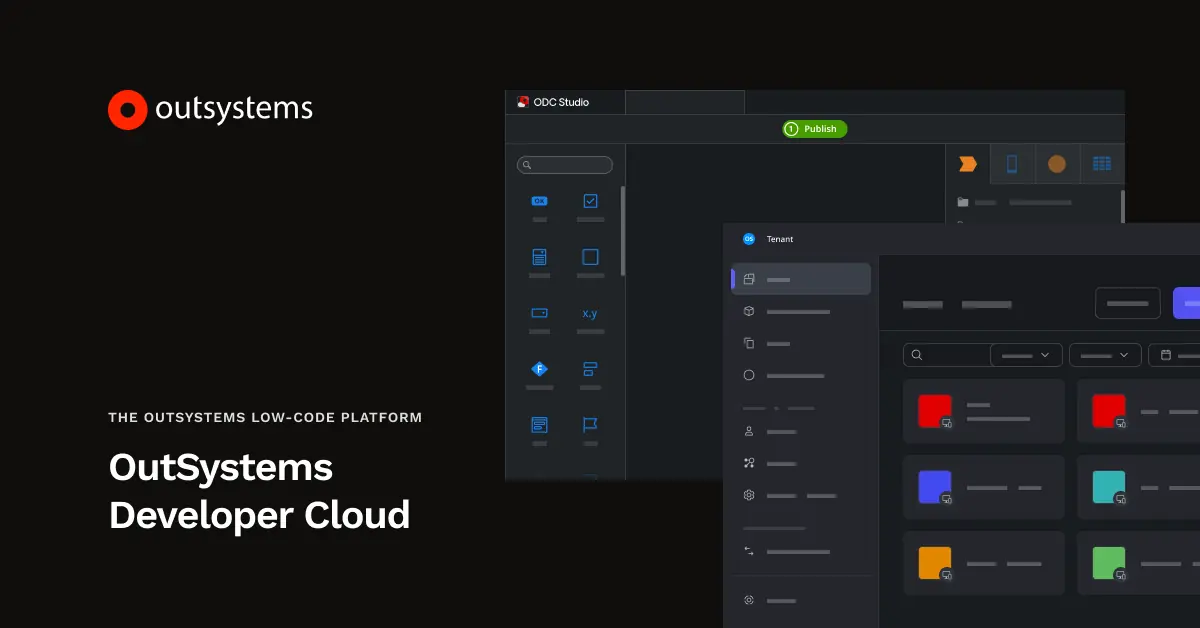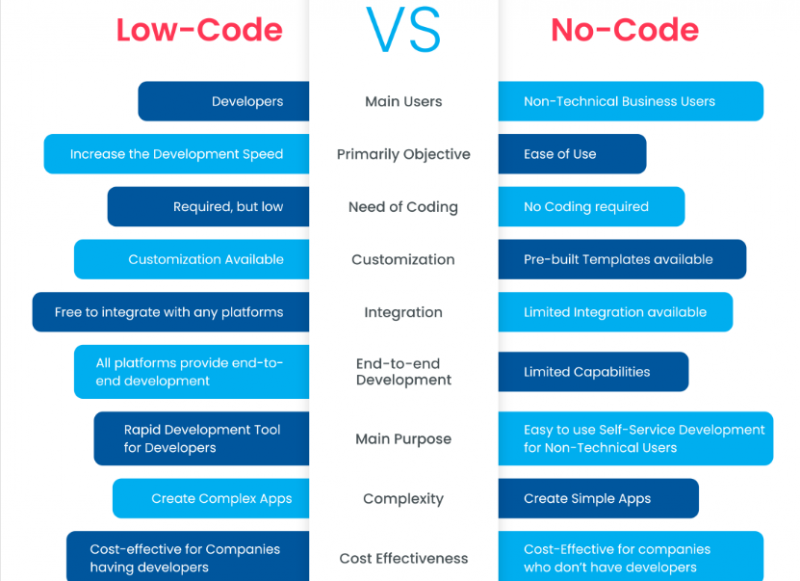Table of Content
- Low-Code Platforms for Building Applications: Are They Worth the Hype?
- What Are Low-Code Platforms?
- Why Low-Code Platforms Are Booming
- Top Low-Code Platforms (2025)
- Low-Code vs. No-Code: What’s the Difference?
- What Can You Build with Low-Code?
- Should You Use a Low-Code Platform?
- Limitations and Pitfalls
- The Future of Low-Code in 2025 and Beyond
- Final Thoughts
Low-Code Platforms for Building Applications: Are They Worth the Hype?
What if you could build powerful web or mobile apps without being a coding expert?
Low-code platforms are making that dream a reality. They’re changing the way businesses innovate, developers work, and startups get products to market.
But what are they, how do they work, and which platforms deliver?
Let’s dive in.
What Are Low-Code Platforms?
Low-code platforms are development environments that let users create applications using visual tools and pre-built components instead of writing extensive code.

But how do they work?
Most platforms offer drag-and-drop interfaces, reusable templates, logic editors, and third-party integrations. You still write code when needed, but you build faster and with less overhead.
Who uses them?
- Developers to accelerate delivery.
- Startups to get MVPs off the ground.
- Enterprise teams to digitize workflows.
- Non-tech teams (like marketing or HR) to build internal tools.

Why Low-Code Platforms Are Booming
We’re in the middle of a developer shortage. Traditional app development is expensive and slow. Businesses need faster results.
Here’s why low-code is taking off:
| Reason | Impact |
|---|---|
| Speed | Build apps in weeks, not months |
| Cost | Fewer dev hours = lower costs |
| Maintenance | Easier updates and iterations |
| Accessibility | Business teams can prototype or ship without dev teams |
Top Low-Code Platforms (2025)
So which platforms are leading the pack in 2025? Here’s a breakdown of the top contenders and what they offer.
1. OutSystems
- Best for: Enterprise-grade apps with full customization.
- Features: Workflow automation, full-stack dev, DevOps integration.
- Why it stands out: Combines low-code speed with high-code control.

2. Mendix
- Best for: Large-scale enterprise apps and rapid deployment.
- Features: Agile project management, multi-cloud deployment.
- Pros: Great for complex workflows, works across departments.
3. Microsoft Power Apps
- Best for: Organizations already using Microsoft 365.
- Features: Deep integration with Teams, Excel, and SharePoint.
- Standout: Great for internal business tools.

4. Bubble
- Best for: Startups building MVPs or SaaS apps.
- Features: Full visual editor, database, and responsive design.
- Notable use case: Many successful startups launched on Bubble.
5. Appgyver (now part of SAP Build Apps)
- Best for: No-code users with pro-level flexibility.
- Features: Drag-and-drop UI, logic-based programming.
- Why it matters: Free tier with enterprise scalability.
Low-Code vs. No-Code: What’s the Difference?
People often confuse low-code with no-code. Let’s clear that up.
| Feature | Low-Code | No-Code |
|---|---|---|
| Code Required | Sometimes | Never |
| Target User | Developers & IT | Business users |
| Flexibility | High | Medium |
| Use Cases | Complex apps, integrations | Forms, dashboards, internal tools |

If you want some technical control, go low-code. If you want to avoid code entirely, explore no-code instead.
What Can You Build with Low-Code?
Let’s look at real use cases. Here are apps you can build today:
- Customer portals
- Inventory management systems
- Internal CRMs
- Expense tracking tools
- Appointment scheduling apps
- E-commerce MVPs
- IoT dashboards
Should You Use a Low-Code Platform?
Ask yourself:
- Do you need to build an app fast?
- Is your dev team stretched thin?
- Do you lack in-house engineers?
- Do you need to prototype before investing in custom code?
If you answered “yes” to at least two of those, low-code might be your best option.
But it’s not for everyone.
Limitations and Pitfalls
Despite the benefits, low-code platforms come with risks.
1. Vendor Lock-In
If your entire app is built on a platform’s proprietary system, moving it elsewhere can be hard or impossible.
2. Customization Limits
Advanced features like complex animations, AI integration, or custom APIs may require manual coding or workarounds.
3. Scalability Concerns
Not all platforms scale well with high-traffic apps. You’ll need to vet this based on your product roadmap.

The Future of Low-Code in 2025 and Beyond
Low-code isn’t a trend. It’s the future of digital transformation.
In 2025:
- AI is powering auto-code generation inside low-code editors.
- Platforms are integrating native DevOps tools.
- Citizen developers are reshaping how IT teams work.
IDC predicts the global low-code market will reach $46.4 billion by 2026.
Final Thoughts
Low-code platforms are more than shortcuts. They’re powerful tools to build real, scalable, and secure applications—fast.
Post Comment
Be the first to post comment!





